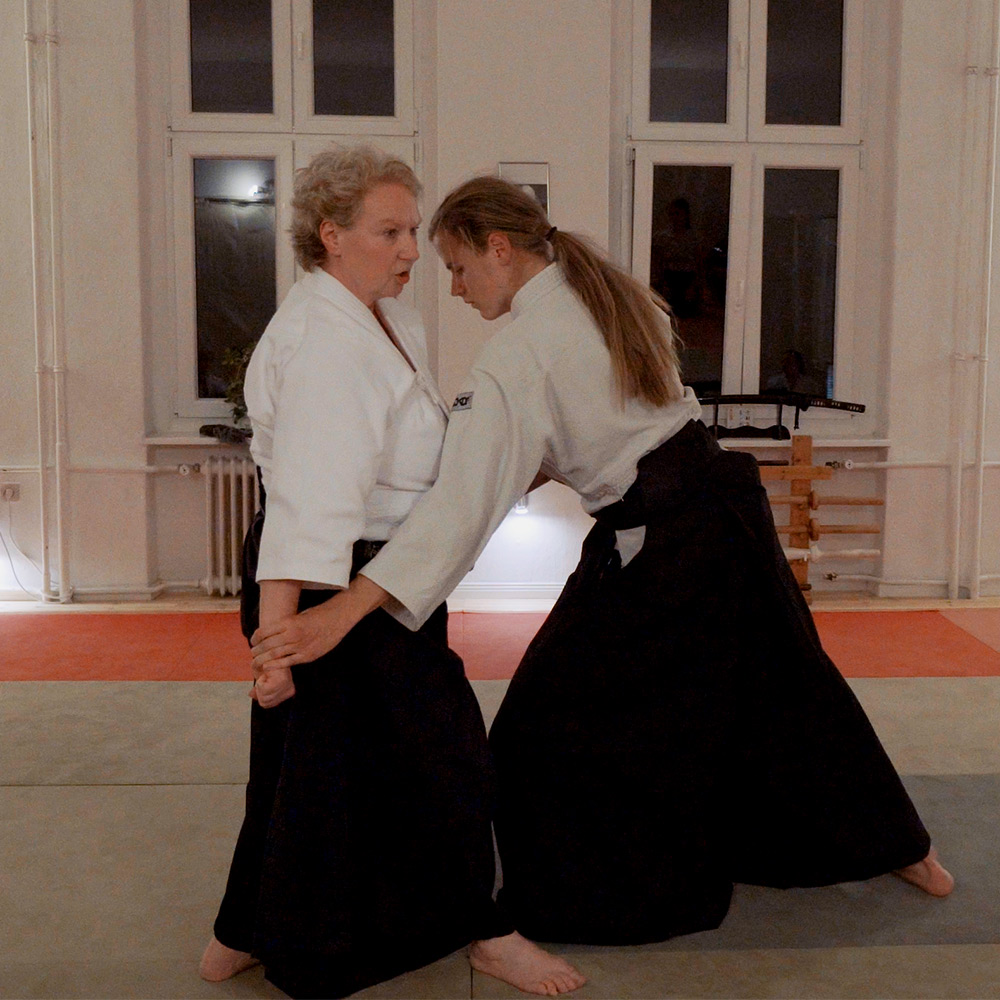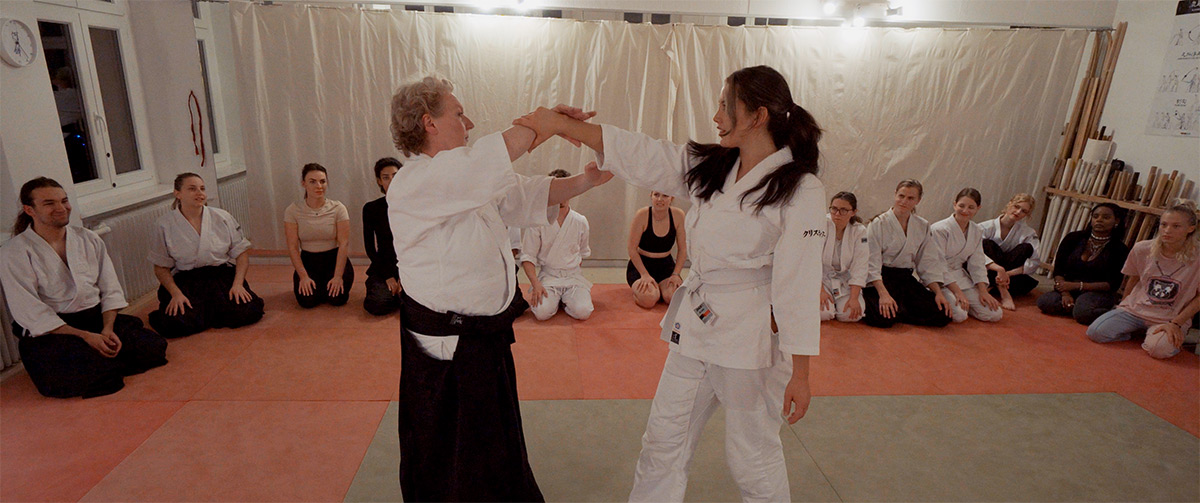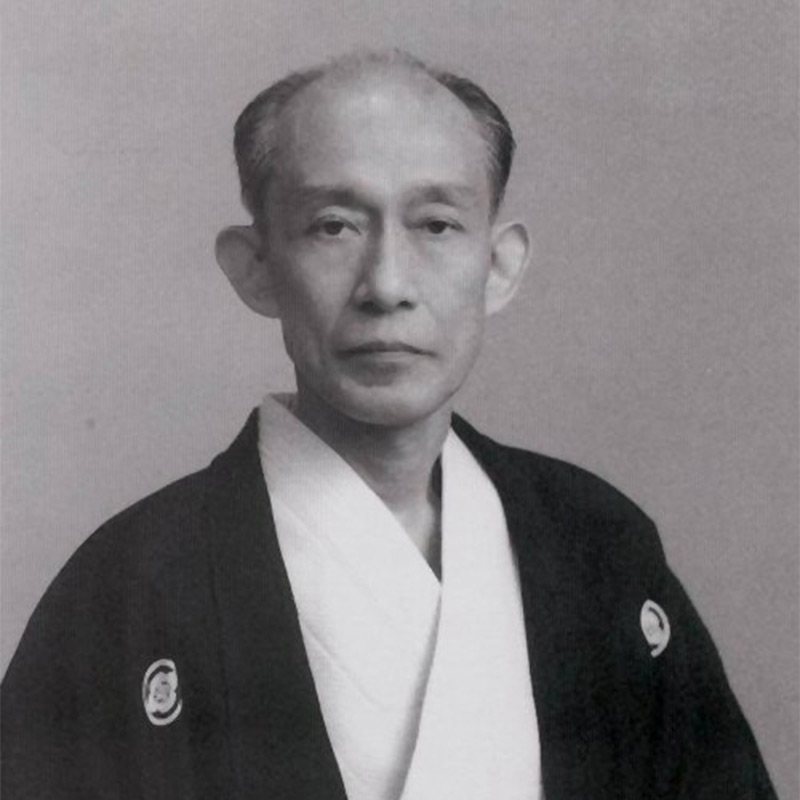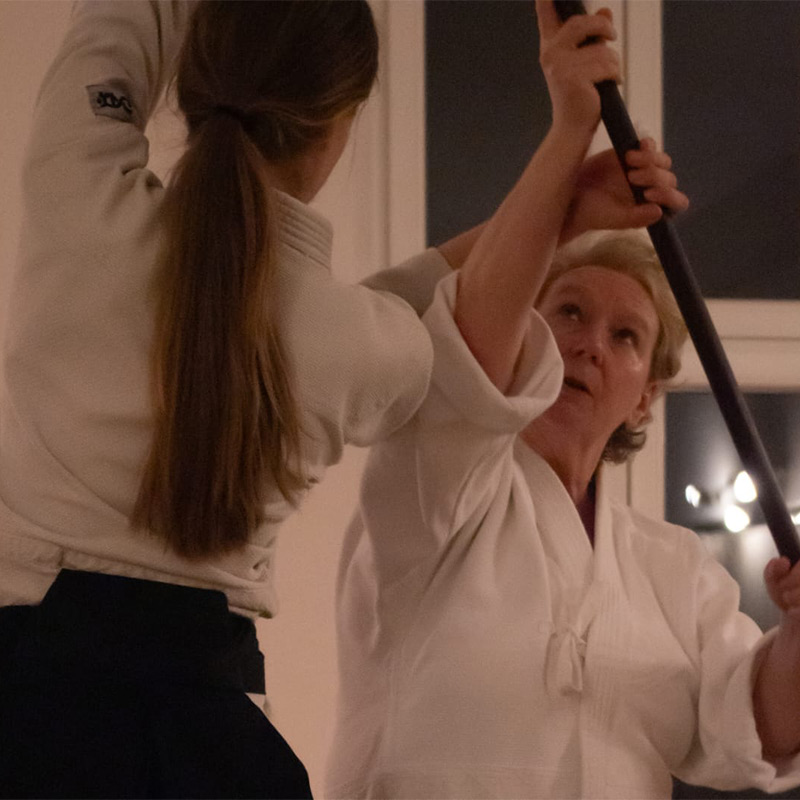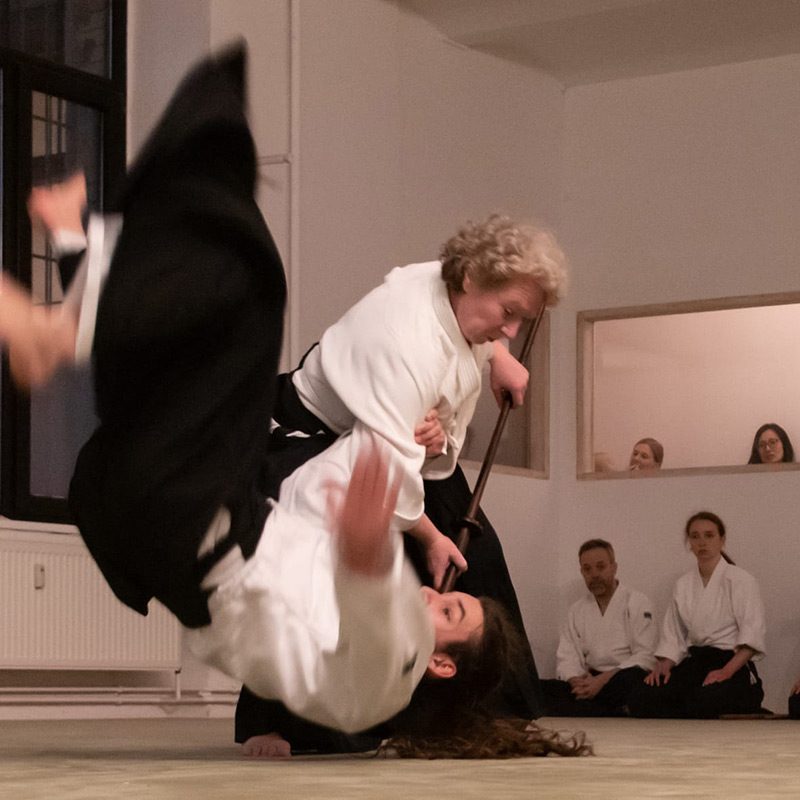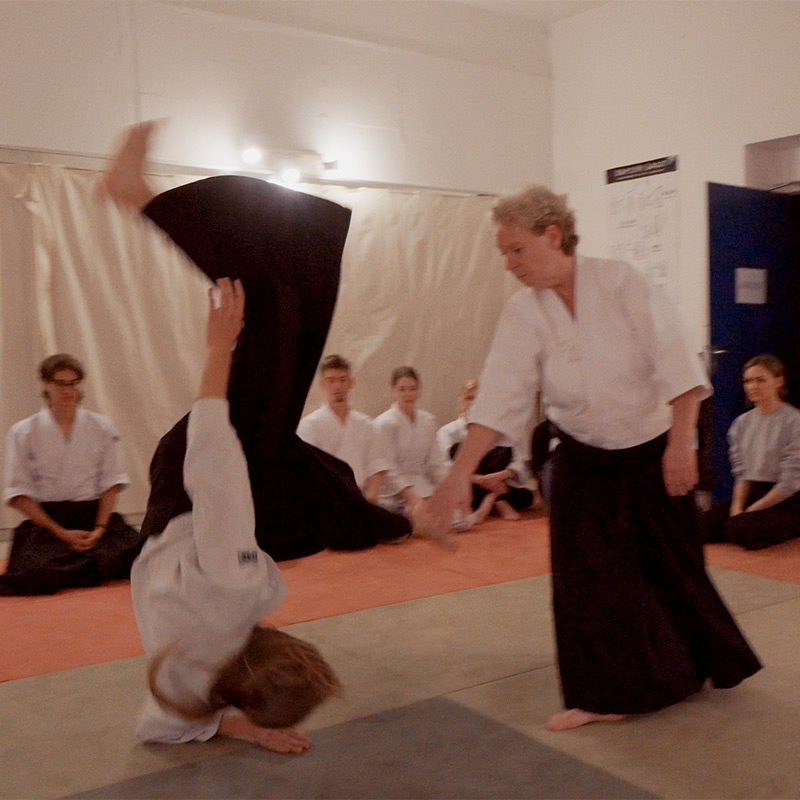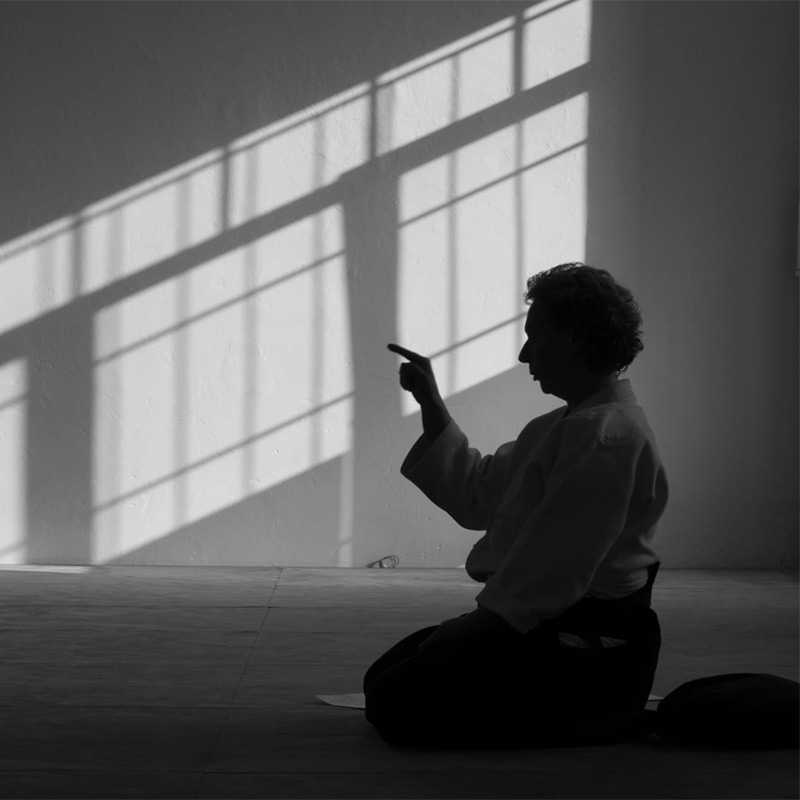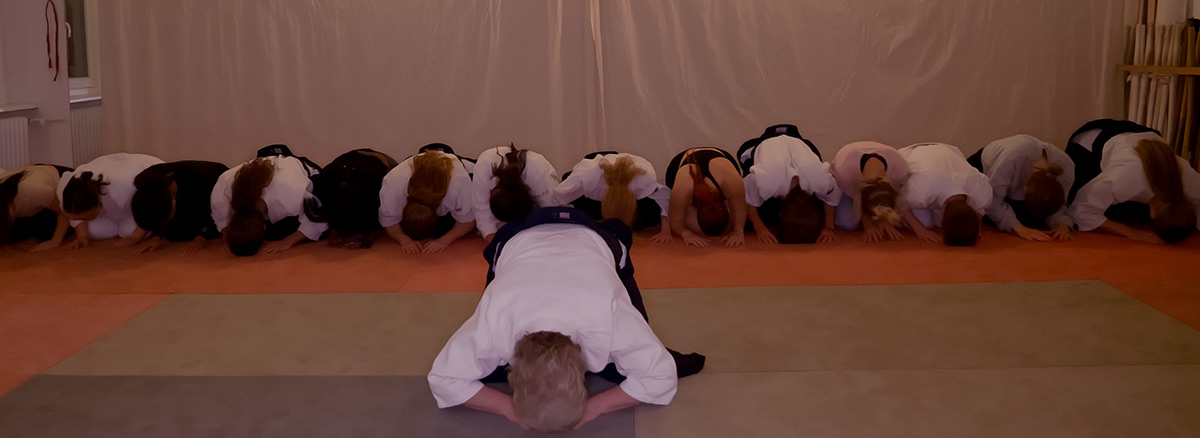In the past few days of our exploratory trip through Berlin, we dealt a lot with the topic of film. Now we are heading to a completely different place. Even if what happens here is in some way connected to the film, everything revolves primarily around spirituality and harmony in interaction with energy, or in short, Aikido.
AIKIDO & THE MOVIES
We visit Christiane Gräf’s Aikido Dojo at Tempelhofer Hafen to find out more about this martial art established by Morihei Ueshiba around 80 years ago. In the early 90s, Aikido became known in the Western world, among other things, through Hollywood films.
Kung Fu, karate, and Muay Thai were already known back then. But the fluid, harmonious movements and supremacy that Steven Seagal showed audiences in his films were a real revelation and inspiration for people around the world.
Of course, films like “Above the Law” (1988) show pure action and violence. The true values of Aikido are hardly or only partially reflected. Because even though Aikido is one of the martial arts, it is not about fighting or competition. Rather, it’s about togetherness. Furthermore, it’s about self-knowledge, control, awareness, balance, breathing, and much more.
IN THE DOJO
Aikido is aesthetics and a physical philosophy at the same time. In the event of an attack, the goal is to protect yourself from injury and the other person as well. It’s not about fighting but preventing the conflict. Beautiful.
In Christiane Gräf’s Aikido Dojo, we experience what training does to those who literally dedicate themselves to this martial art. We meet people who seem calm and very balanced and who are ready to share their positive energy with us. The dojo is filled with peace, warmth, openness, and kindness.
THE HEART OF AIKIDO
Even though the aim is to avoid fighting, Aikido is still a martial art, a special one. Founder Morihei Ueshiba merged many fighting styles that he learned throughout his life into Aikido.
The special and great thing is that you don’t need any real strength to be able to defend yourself in an emergency. Aikido is therefore suitable for everyone, especially girls and women.
Because Aikidōka are not only mentally superior to their opponents. Cleverly, they are permeable and open during an attack in order to absorb the opponent’s power through skillful hand techniques and movements to send it back like a boomerang.
But it’s not about hurting the other person, it’s about presenting mental strength so that the other gives up on his endeavor or doesn’t even come up with strange ideas.
A GREAT VALUE: TIME
Recently, I was talking to a shady businessman, who practices aggressive martial arts by himself, about Aikido. His response was, “Aikido takes too long time.” And so it is. And this is amazing.
Today we believe that we can find true love with a swap, that we can learn or understand something within three minutes, or that we can end a friendship via WhatsApp with the push of a button.
We have to learn again that all good things take time, a lot of time. Likewise, a learning process only has value if it deals with all levels and includes setbacks as well as successes. The fast pace of our time tires us. Much more, it tears us apart.
Therefore, the long path to learn Aikido – which actually never ends – is important to immerse yourself deeply in this martial art and thereby achieve true spirituality.
AIKIDO ALSO MEANS CONNECTION AND COMMUNICATION
It’s not about being cool, feeling superior, being the stronger one. Furthermore, it’s also not about quick success or defeating others. However, it’s about respect, honor, humility, love, and non-violence. Finally, it’s about togetherness and communication.
And while we’re on the topic of communication… Some of the students from the Aikido Dojo at Tempelhofer Hafen introduce themselves in the film. Now we would like to introduce Sensei Christiane Gräf in more detail in our interview. She holds 4th Dan Aikikai Tokyo. So, before we start the chat, let’s briefly talk about the most important styles.
THE 4 AIKIDO STYLES
There are four basic Aikido styles, Takemusu Aikido, Ki No Kenkyukai, Yoshinkai, and Aikikai. While the first three were established by Morihei Ueshiba O-Sensei’s students, Aikikai was created by his son, Kishomaru Ueshiba (1921-1999).
Besides, it was also he who spread Aikido worldwide through his students. His style is also referred to as “Hombu Style” (Hombu is the name of the Tokyo dojo) or simply as “Tokyo Style”.
Since this style does not focus on combat fitness, it can often only be carried out with a partner. This choreography led to the nickname “Dancing Style”. His son, Moriteru Ueshiba, born in 1951, became the successor as Dōshū after the death of Kisshomaru Ueshiba.
IN TALK WITH CHRISTIANE GRAEF
Christiane has been practicing Aikido for over 25 years. She was taught by, among others, Christian Tisser (8. Dan Akkai Tokyo) and Ulrike Serak (6th Dan, Berlin), with whom Christiane is still a student today.
What fascinates you most about Aikido?
Through Aikido I’m in connection with many different people and establish the highest possible, intensive contact at any given moment. This contact takes place both physically and mentally. I love the sincerity I feel for myself and the person I’m talking to.
If you had to summarize your values and those of Aikido into 5, what would they be?
Mindfulness, respect, joy, non-violence, connection.
Were there any key moments in your Aikido training that particularly influenced you?
Of course, my teacher Ulrike Serak influenced me particularly. She has laid the foundations for my Aikido for almost three decades now and supported me at the beginning of my teaching career. I led the children and youth training in their dojo for 6 years. At this point, I could try out adult training and develop my own teaching style.
Good teachers, regardless of the school, shape the student’s future. You also traveled to Paris to further develop your skills. What can you tell us about it?
That’s right, good teachers are essential. A special encounter with Seishiro Endo Sensei was very memorable for me. He threw me using a certain Aikido technique and it happened with such ease that, lying on the mat, I didn’t know how I got there. So, I felt a connection that I had never experienced in Aikido before.
Other Aikido and Kashima Kenjutsu Senseis who have had a great influence on me are Christian and Micheline Tissier. Furthermore, Pascal Guillemin and Bruno Gonzalez trained me, and, in the last two years, Jan Nevelius. Max Eriksson Ohlwein, and Philippe Orban are my sensais in Kahsima Kenjutsu.
Catherine of Siena said about 700 years ago: “It is not the beginning, but the perseverance that will be rewarded.” Aikido takes a lot of time, especially if you want to achieve big goals.
Nowadays, many people give up at the slightest setback, have no patience, and don’t persevere. What about the next generation in Aikido?
Our dojo in particular does a lot for youth work. Between 80 and 90 children and young people between the ages of 4 and 17 always train with us. In our opinion, the starting age for Aikido training is 4 years.
I have not yet been able to determine an upper age limit, as Aikido can be trained very individually by each person, adapted to their physical and mental abilities.
What do you need to bring with you to train in Aikido?
You should have openness and joy in movement. But even introverted and rather sluggish people can notice a change over time through Aikido.
We live in stressful times. Burnouts, depression, and stress dominate our everyday lives. Can Aikido be a kind of balance or even cure here?
From my point of view, Aikido can help a lot to alleviate problems such as anxiety, burnout, depression, etc. And that goes far beyond the sporting aspect.
I think that by creating a community on the mat in which everyone can be who they are, with all their physical or mental problems, you can feel very safe.
You experience the phenomenon in which, miraculously, all sensitivities are usually completely ignored during the time on the mat. And this can create an energy that is based on joy, serenity, and real togetherness. Because everyone who practices together pursues the same goal.
Which is that?
Joint development in movement – mentally and physically! Furthermore, for me, Aikido is not a sport, but a path of personal development!
In these fast-moving times, Aikido offers deceleration and the opportunity to find a place of calm. Everyone can really and truly experience the moment to escape this fast pace and establish a calmness that makes everyday life much more relaxed.
Aikido training never ends. What are your plans for your training and the dojo?
My plans for the dojo are to include my advanced students in the teaching process. Moreover, I want to continue working together on a dojo that is supported by all members based on mutual respect and can therefore grow healthily.
Besides, my plans in Aikido are to continue working on my mindfulness. In addition, to make myself aware of habits and thereby enable changes and development. Furthermore, I would like to intensify the path in Aikido. So I want to go beyond the actual technique and get a connection to myself and my center. I would also like to strengthen this technique in this way and completely relax everything else.
Big goals. And what would you like to give people for 2024?
In general and especially for 2024, I would like to encourage everyone to connect more again. Especially in the connection with other people, but also with oneself. In recent years we have seen a division in society that, in my opinion, is inhumane.
There is also a noticeable tendency to separate oneself from one’s values.
We absolutely have to be aware of this and counteract it.
Because our children and grandchildren should also have the opportunity to experience the joy of meeting other people. Aikido is a wonderful option for this.
Text: Marco Kokkot

